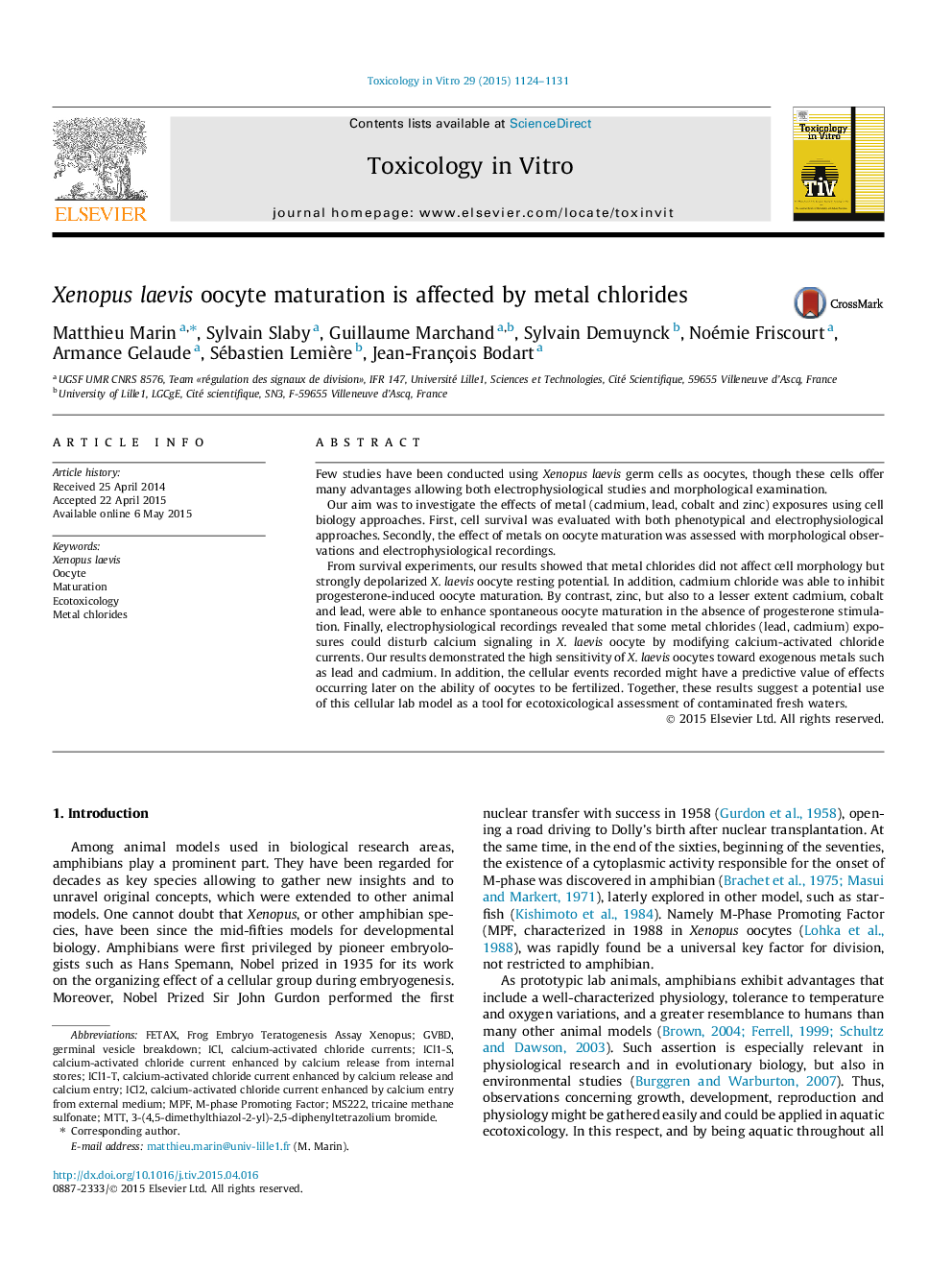| کد مقاله | کد نشریه | سال انتشار | مقاله انگلیسی | نسخه تمام متن |
|---|---|---|---|---|
| 5861630 | 1133763 | 2015 | 8 صفحه PDF | دانلود رایگان |

- Cadmium (CdCl2) inhibits progesterone (Pg)-induced oocyte maturation.
- Metal chlorides, specially zinc, induce oocyte maturation independently of Pg.
- Cadmium and lead chlorides affect calcium signaling.
- Deregulation of oocyte maturation could affect oocyte fertilization.
- Xenopus laevis oocyte shows a great sensitivity to cadmium and lead.
Few studies have been conducted using Xenopus laevis germ cells as oocytes, though these cells offer many advantages allowing both electrophysiological studies and morphological examination.Our aim was to investigate the effects of metal (cadmium, lead, cobalt and zinc) exposures using cell biology approaches. First, cell survival was evaluated with both phenotypical and electrophysiological approaches. Secondly, the effect of metals on oocyte maturation was assessed with morphological observations and electrophysiological recordings.From survival experiments, our results showed that metal chlorides did not affect cell morphology but strongly depolarized X. laevis oocyte resting potential. In addition, cadmium chloride was able to inhibit progesterone-induced oocyte maturation. By contrast, zinc, but also to a lesser extent cadmium, cobalt and lead, were able to enhance spontaneous oocyte maturation in the absence of progesterone stimulation. Finally, electrophysiological recordings revealed that some metal chlorides (lead, cadmium) exposures could disturb calcium signaling in X. laevis oocyte by modifying calcium-activated chloride currents. Our results demonstrated the high sensitivity of X. laevis oocytes toward exogenous metals such as lead and cadmium. In addition, the cellular events recorded might have a predictive value of effects occurring later on the ability of oocytes to be fertilized. Together, these results suggest a potential use of this cellular lab model as a tool for ecotoxicological assessment of contaminated fresh waters.
Journal: Toxicology in Vitro - Volume 29, Issue 5, August 2015, Pages 1124-1131